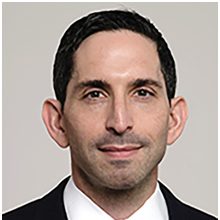The Copyright Act grants copyright holders a limited monopoly over their copyrighted works, encouraging and rewarding artistic and literary creations, while ensuring broad availability of those creations to the public. In the final months of 2024, the U.S. Court of Appeals for the Second Circuit balanced the Copyright Act’s twin goals in assessing the propriety of:
(1) A free e-book lending program (Hachette Book Group, Inc. v. Internet Archive, 115 F.4th 163 (2d Cir. 2024));
(2) An ostensibly untimely infringement action brought by a “sophisticated” copyright enforcer (Michael Grecco Productions, Inc. v. RADesign, Inc., 112 F.4th 144 (2d Cir. 2024)); and
(3) A hit song that shared commonplace musical characteristics with a 41-year-old predecessor (Structured Asset Sales, LLC v. Sheeran, 120 F.4th 1066 (2d Cir. 2024)).
In each, the creators of copyrighted works came out on top.
FREE LENDING IS NOT “FAIR USE”
At issue in Hachette was the “Free Digital Library,” a program by the Internet Archive, a non-profit organization, that offered free, scanned, electronic versions of books that it owned to the public online. Publishers objected to the practice, suing in the Southern District of New York for infringement of copyrights they held in 127 books. The district court (Judge John Koeltl) rejected a “fair use” defense raised by the Internet Archive, granting the publishers summary judgment and barring further distribution of the e-books.
The Second Circuit (Judge Robinson, joined by Judges Menashi and Kahn) affirmed. A court assesses a “fair use” defense under the Copyright Act based on four non-exclusive factors:
(1) The purpose and character of the use, including whether it is for commercial or educational purposes;
(2) The nature of the copyrighted work;
(3) The portion of the copyrighted work that is used; and
(4) The effect of the use on the potential market and value of the work in question.
Applying those factors, the court held that the “Free Digital Library” did not pass muster. Key for the court was that the challenged use of the copyrighted books – albeit non-commercial – did not “transform” the works in any meaningful respect: the Internet Archive simply copied the books wholesale and made their full content available online. That practice, the court feared, could devastate the market and value of the original works, because it is “difficult to compete with free.” In the court’s view, prohibiting free e-book lending would benefit both publishers and authors, and the public at large, by encouraging and incentivizing the creation of literary works.
“SOPHISTICATION” NO BAR TO A BELATED INFRINGEMENT ACTION
The plaintiff in Michael Grecco was a photography studio with a lengthy track record of copyright enforcement. In 2017, the defendant, a designer of shoes, began using plaintiff’s photos on its website without permission. Plaintiff sued defendant for copyright infringement, but not until October 2021, over four years later, claiming it had only then discovered the infringing use. The district court (Judge Ronnie Abrams of the Southern District of New York) dismissed the action under the Copyright Act’s three-year statute of limitations, holding that plaintiff’s admitted “sophistication” barred any extension or exception to the three-year statutory limitations period.
The Second Circuit (Judge Wesley, joined by Judges Chin and Lee) vacated the district court’s decision. The Second Circuit has adopted a “discovery” rule, under which the Copyright Act’s three-year statute of limitations does not begin to run until the holder discovers, or with due diligence should have discovered, the infringement. That rule, the court explained, applies to all copyright plaintiffs equally, regardless of their level of sophistication. It is a defendant’s burden to plead and prove a statute of limitations defense. As it was not clear from the “face of the complaint” that plaintiff should have discovered the infringement sooner, the court allowed the action to proceed.
NOT ALL SIMILARITIES BETWEEN SONGS ARE “SUBSTANTIAL”
Structured Asset Sales involved two popular songs from two different eras, Marvin Gaye’s 1973 hit “Let’s Get It On” and Ed Sheeran’s 2014 chart-topper “Thinking Out Loud.” Plaintiff, an entity that owned one-ninth of the royalties from “Let’s Get It On,” filed suit against Sheeran in the Southern District of New York, alleging copyright infringement on the theory that the two songs shared a similar chord progression and distinctive “harmonic rhythm” – i.e., the occurrence of chord changes slightly ahead of the beat. The district court (Judge Louis Stanton) entered summary judgment for Sheeran, deeming it “common sense” that songs must have more in common than this to claim copyright infringement.
The Second Circuit (Judge Park, joined by Judges Calabresi and Parker) affirmed. To establish copyright infringement, a plaintiff must show (1) actual copying, or (2) a substantial similarity between defendant’s work and protectable elements of plaintiff’s work. The inquiry turns on whether an “ordinary observer” would regard the “aesthetic appeal” of both as “the same.” The court explained that the I-IV-V chord progression used in the two songs is “ubiquitous” in popular music and so not protectable. Nor is rhythm, which is a basic building block in all music. Combining those two unprotectable elements did not add up to copyright infringement in this case, especially considering the two songs’ different lyrics and melodies.
CONCLUSION
The common thread in each of these decisions is concern for the rights of creators – and specifically, ensuring they are adequately incentivized to continue producing creative works. In Hachette, the court feared the chilling effect on authors if a non-profit were permitted to republish full-scale copies of books for free, without permission. In Michael Grecco, the court gave the benefit of the doubt to the photographer despite its belated infringement action, placing the onus on the alleged infringer to prove untimeliness. And in Structured Asset Sales, the court affirmed a contemporary artist’s right to profit from his hit song, over a special-purpose entity’s ability to recover on a half-century-old copyright. To be sure, past is not necessarily prelude. But, for now, creators’ rights appear to reign supreme in the Second Circuit.

